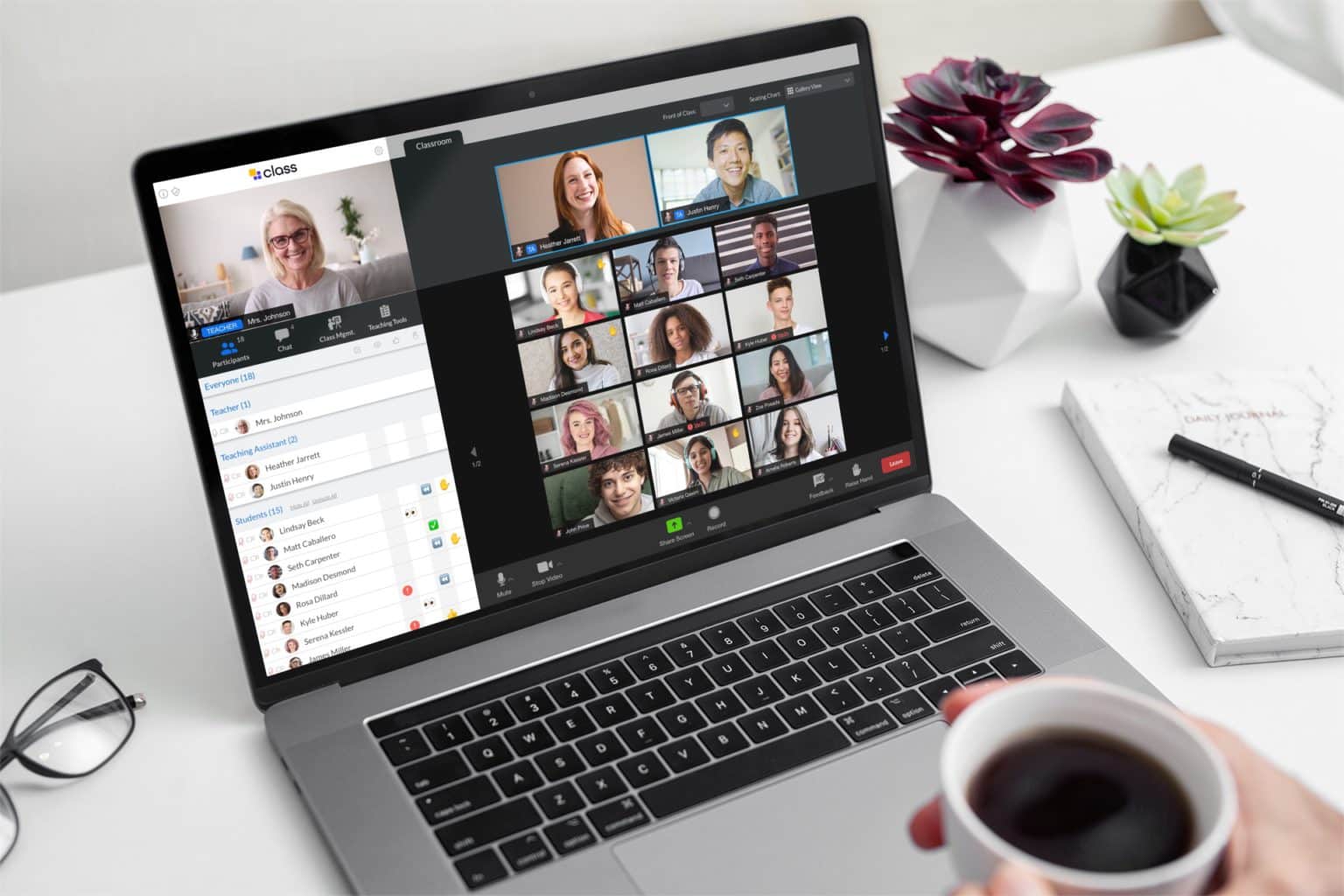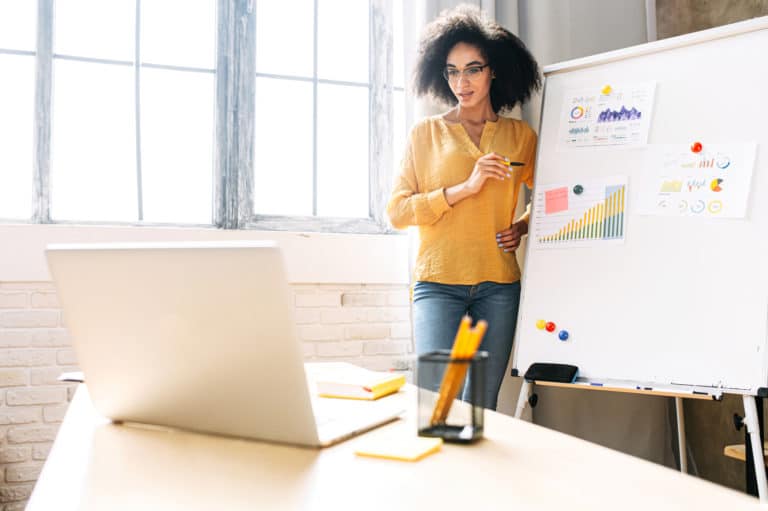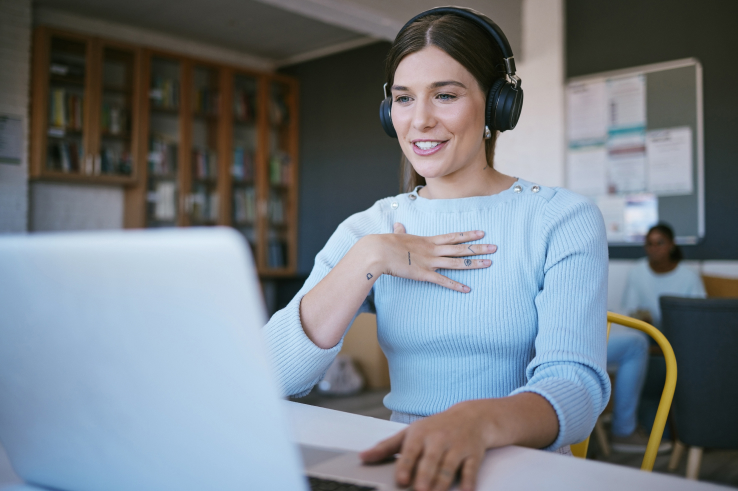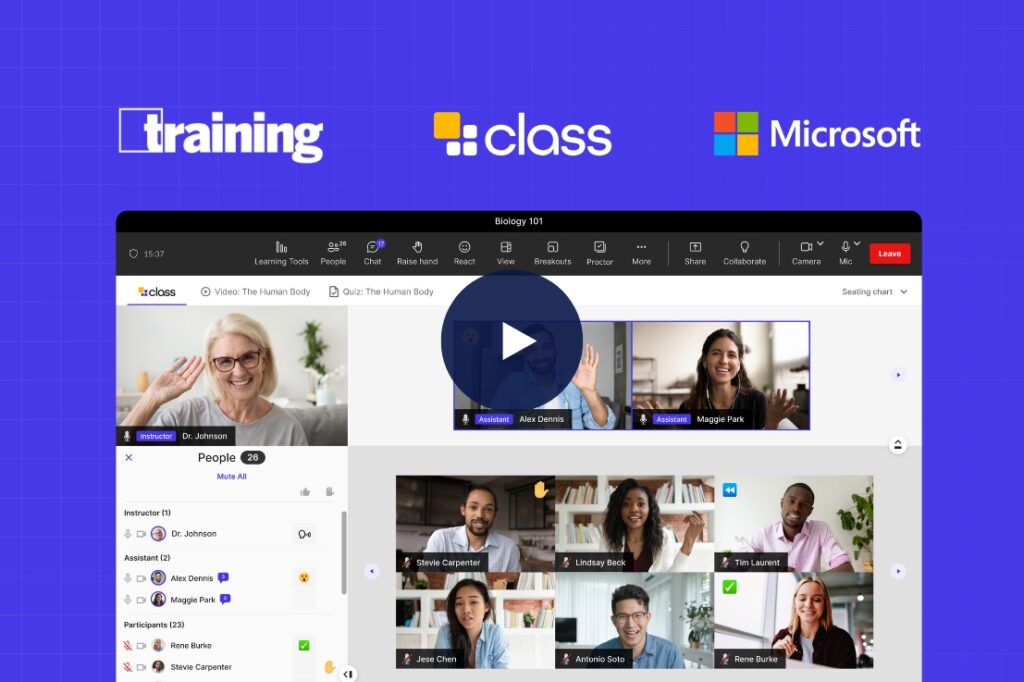
A K-12 Blended Learning Guide: By Teachers, For Teachers

Class Technologies
Class is the next generation virtual classroom for K-12, higher education, government agencies, and the workplace. Contact us today to schedule your live demo and see Class in action.

Class Technologies
Class is the next generation virtual classroom for K-12, higher education, government agencies, and the workplace. Contact us today to schedule your live demo and see Class in action.

As many schools continue to operate in some form of a hybrid model, teachers have learned to adapt their lesson plans to accommodate K-12 blended learning. Here we take a look at what blended learning is and some blended learning examples and blended learning models teachers can readily put to use in their own classrooms—whether in-person or online.
What Is Blended Learning?
Blended learning, as the phrase suggests, is a teaching approach that blends the use of both digital and in-person teaching methods. It’s a model that has been used increasingly since the pandemic emerged and one that is likely to continue being used to some extent well into the future. And for good reason. As an article in The Edvocate by Matthew Lynch points out, there are some major benefits provided by taking a blended approach to learning. These include:
- Efficiency. Technology has ramped up teachers’ ability to explain concepts—even very complex concepts—by incorporating a variety of methods into their lesson plans.
- Accessibility. Traditional classrooms—and the materials within them—were only open and accessible to students during school hours. Now technology makes information available 24/7/365 allowing students to access that information when and where they need to.
- Self-paced. Blended learning approaches offer students the opportunity to learn at their own pace—and to access the information they feel most comfortable with (e.g., a video versus a document).
- Engagement. It may seem counter-intuitive, but as Lynch notes: “This learning style promotes a number of effective means for teachers and students to become more engaged with one another.”
- Fun. Yes, fun. Gone are the traditional lectures given by a “sage on a stage.” Blended learning uses a variety of approaches that are more engaging and that can be more fun for students.
Blending learning, says Lindy Hockenbary, an educator and the author of A Teacher’s Guide to Online Learning, “is any combination of face-to-face learning and online learning.” That, she says, covers a lot of ground! Fortunately, there are some specific blended learning models that teachers can turn to for inspiration as they plan their courses.
Luke Rosa is a high school teacher who has created a website—Students of History—to share some of the social studies resources he’s successfully used in his classroom. Rosa says that he has found blended learning to be “incredibly helpful in saving valuable classroom time for more interaction, one-on-one help, and engaging in more difficult document analysis activities with kids.”
One of the methods he has used has been to record a lesson and share it with students via YouTube. He’ll assign a video lesson—usually between 20-25 minutes for students, have them complete guided notes as they watch the video, and then, during the next class period, start with a warmup based on their notes and have a brief discussion about questions they may have. That, he says, “leaves a large portion of the class period to analyze historical documents and resources.” He rotates around to help students with anything they may not understand.

Blended Learning Models
Hockenbary points to the Christensen Institute’s seven blended learning models which they provide more detail on in their Blended Learning Universe website. They include:
- Station rotation—students rotate from station to station in small groups; stations can be both physical and virtual.
- Lab rotation—similar to station rotation, but the lab component occurs in a lab environment.
- Individual rotation. Students rotate individually rather than in groups.
- Flipped classroom—students review material ahead of time on their own and then come together to discuss.
- Flex blended learning—students go through various learning activities according to their own learning needs.
- A la carte—learners take classes in both face-to-face and virtual settings.
- Enriched virtual—students learn primarily online, but supplement online learning with face-to-face sessions with a teacher.
In addition, Hockenbary says, these models themselves can be blended—“yes, a blended, blended model!” These offer an array of K-12 learning solutions teachers can select from.
Blended learning strategies as the models show have varying degrees of both face-to-face and online learning. The rotation models have the most face-to-face components and the enriched virtual model the most online learning components, Hockenbary says. “In terms of popularity, the station rotation model is by far the most commonly used,” she says. “In fact, most elementary teachers use the station rotation model—and have for years—and most likely don’t know they are implementing a blended learning model!” she says. The flipped classroom model is also popular.
Best Practices in Adopting Blended Learning
Because K-12 blended learning now almost always involves some component of online learning requiring technology, it’s important to understand the technology students have available to them. Don’t assume that all students have the same access—or understanding—of the technology they’ll need to participate in blended learning. Ask them at the beginning of each school year/semester.
Make sure you’re also well prepared and have thoroughly tested out the technology you plan to use—not just once, but before every class session. Something as simple as clearing your cache before you go online to teach can help avoid unfortunate tech slow-downs and glitches.
Make it meaningful. Don’t just use technology because it’s there and you can. Use it thoughtfully, selecting the tech tools you use for their relevance to the learning outcomes you hope to achieve.
Another best practice related to technology—don’t rely on it too much.
Rosa offers the following best practices for effective blended learning:
- Make the at home or online portion of the learning something students are not likely to have many questions about. “That’s why I love simple videos with guided notes or reading with a graphic organizer,” Rosa says.
- Keep everything simple! “You don’t want kids getting frustrated because they don’t understand the assignment.”
- Leave time—5 minutes or so—at the end of class to answer questions about the at-home learning. Start class with a review of what they did at home and answer questions.
Keep well-being, engagement, and feedback top of mind when engaging in blended learning. In an article for common sense education, Paul Barnwell points to research done by Jon Eckert at Baylor University during the pandemic that revealed these three themes as being critical, especially during COVID-19. Learning can’t occur, he says, before students’ physical, mental, emotional, social, and spiritual (Maslow’s hierarchy) needs have been addressed.
Finally, share what you’ve learned. Teachers across all grades and all subjects have now had experience with K-12 blended learning—adopting practices that work best for them and their students and discarding others. Sharing what you’ve learned with others can help to spread best practices and improve upon others’ work. In another article, this one in The Tech Edvocate, Matthew Lynch talks about a social media network for educators he and his team have launched called Pedagogue. “It supports blended learning by giving educators the power to create, share and reuse interactive learning experiences and assessments while leveraging over 30 learning content templates.” It can be a great place to go to get your own creative juices flowing as you plan for your next blended learning lesson.

Class Technologies
Class is the next generation virtual classroom for K-12, higher education, government agencies, and the workplace. Contact us today to schedule your live demo and see Class in action.

Class Technologies
Class is the next generation virtual classroom for K-12, higher education, government agencies, and the workplace. Contact us today to schedule your live demo and see Class in action.
Stay in the know
Get our insights, tips, and best practices delivered to your inbox
hubspot form will be here...

Ready to get started?
Sign up for a product demo today to learn how Class’s virtual classroom powers digital transformation at your organization.



